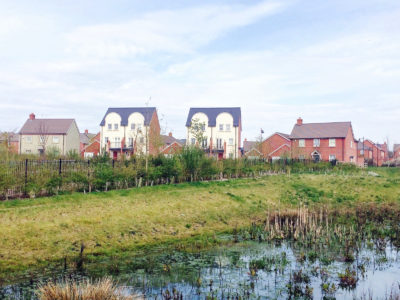How do Sustainable Drainage Systems (SuDS) work?
Sustainable Drainage systems (SuDS) have a key role in planning conditions now with many local authorities. They form part of flood risk management plans in determining new build development and also help improve the spaces where we live, work and play.
SuDS account for the management of surface water to prevent flooding, but also control water quality (pollution). biodiversity (wildlife and plants) and amenity.
SuDS mimic nature and typically manage rainfall close to where it falls. They can be designed to transport (convey) surface water, slow runoff down (attenuate) before it enters watercourses.
SuDS provide areas to store water in natural contours and can be used to allow water to soak (infiltrate) into the ground or evaporated from surface water and lost or transpired from vegetation (evapo-transpiration).
SuDS are often regarded as a sequence of management practices, control structures and strategies. They are designed to efficiently and sustainably drain surface water, while minimising pollution and managing the impact on water quality of local water bodies.
SuDS are more sustainable than traditional site drainage methods because they:
- Manage runoff volumes and flow rates from hard surfaces, reducing the impact of urbanisation on flooding
- Provide opportunities for using runoff where it falls
- Protect or enhance water quality (reducing pollution from runoff)
- Protect natural flow regimes in watercourses
- Are sympathetic to the environment and the needs of the local community
- Provide an attractive habitat for wildlife in urban watercourse
- Provide opportunities for evapotranspiration from vegetation and surface water
- Encourage natural groundwater/aquifer recharge (where appropriate)
- Create better places to live, work and play.
Many Local Planning Authorities (LPAs) now insist that developers, architects and planning consultants submit drainage assessments to respond to the potential for SuDS and to justify why they are not be to included in development design.
A site may require an initial Sustainable drainage assessment to verify the feasibility of the soil to be able to capture surface run-off naturally. An LPA may stipulate specific requirements in the planning conditions, in which case a more detailed SuDS infiltration suitability report may need to be commissioned.
SuDs adoption by water companies may be considered providing the scheme is supported by an appropriate design that meets their requirements.
For more information about how GeoSmart could help you with your drainage planning submission, please call us on 01743 581 415.



